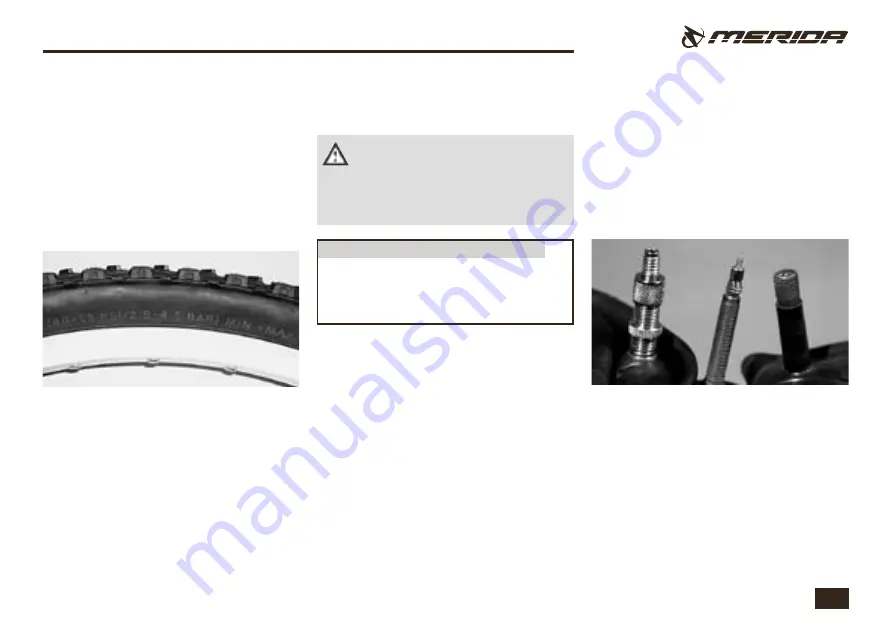
58
. The wheels
Tires have to be inflated to the correct air
pressure in order to function properly. Prop-
erly inflated tires are also more resistant to
flats. An insufficiently inflated tire can eas-
ily get pinched (“snake-bitten”) when it goes
over a sharp curb.
The air pressure recommended by the manu-
facturer is given on the side of the tire or on
the type label.
Increasing the pressure even further does
little to reduce friction but only makes the tire
harder. Ask your MERIDA dealer for advice.
Inflation pressure is often given in
the old system of units, i.e. in psi
(pounds per square inch). The table gives
the most common pressure values in terms
of both systems.
There are various valve types in general use
on bikes:
Sclaverand or Presta valves: This type is now-
adays used on almost all types of bikes. It is
designed to withstand extremely high pres-
sures.
Schrader or car valve: This is an adapted car
tire valve.
MERIDA exclusively uses Sclaverand valves.
The lower of the two pressure specifications
makes for better cushioning and is therefore
best for off-road cycling.
Rolling resistance decreases with growing
pressure, but so does comfort. A high tire
pressure is therefore most suitable for riding
on tarred roads.
The tire and rim alone would not be able to
hold the air. Therefore a tube has to be placed
inside the tire to retain the air pressure. The
tube is pumped up via a valve.
An exception to this are the classical tubular
tires used on road racing bikes which have to
be glued to the rim and the newly developed
tubeless systems for mountain bikes (e.g.
UST). In both cases, rim and tire provide an
air-tight design without the aid of a tube.
These valve types are equipped with a plastic
cap to protect them from dirt. The Schrader
valve can be inflated with a suitable pump
directly after removing the protective cap.
psi bar psi bar psi bar
30 2.1 70 1.8 110 7.6
40 2.8 80 5.5 120 8.3
50 3.5 90 6.2 130 9.0
60 4.1 100 6.9 140 9.7
















































